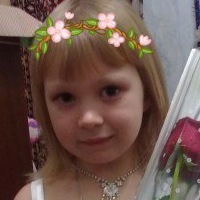
Рассказ о искусственном языке.НА АНГЛИЙСКОМ
 0
0
 0
0
Ответы на вопрос
 Внимание! Ответы на вопросы дают живые люди. Они могут содержать ошибочную информацию, заблуждения, а также ответы могут быть сгенерированы нейросетями. Будьте внимательны. Если вы уверены, что ответ неверный, нажмите кнопку "Пожаловаться" под ответом.
Внимание! Ответы на вопросы дают живые люди. Они могут содержать ошибочную информацию, заблуждения, а также ответы могут быть сгенерированы нейросетями. Будьте внимательны. Если вы уверены, что ответ неверный, нажмите кнопку "Пожаловаться" под ответом.

One billion people speak English today. That's about 20% of the world's population. 400 million people speak English as their first language. For the other 600 million people it's either a second language or a foreign language.
English is the first language in the United Kingdom, the United States of America, Australia and New Zealand. It is one of the official languages in Canada, the Irish Republic and the Republic of South Africa.
As a second language English is spoken in more than 60 countries. It is used by the government, businessmen and universities.
English is the language of politics and diplomacy, science and technology, business and trade, sport and pop music. 80% of all information in the world's computers is in English. 75% of the world's letters and faxes are in English. 60% of all international telephone calls are made in English. More than 60% of all scientific journals are written in English.
 0
0
 0
0

Title: The Enigmatic World of Artificial Languages
Introduction: Language has always been a tool for human communication, allowing us to express our thoughts, emotions, and ideas. Over the centuries, countless languages have emerged and evolved, reflecting the diverse cultures and societies that populate our planet. However, in the pursuit of further expanding our linguistic horizons, humans have also delved into the realm of artificial languages - constructed systems of communication with unique grammar, vocabulary, and syntax. In this narrative, we explore the fascinating world of artificial languages and their impact on human communication.
Body:
1. The Birth of Artificial Languages: The concept of artificial languages dates back to ancient times, with examples such as Lingua Ignota developed by Hildegard of Bingen in the 12th century or the philosophical language, Ars Signorum, proposed by John Wilkins in the 17th century. However, it was in the 19th and 20th centuries that constructed languages gained significant attention. One of the most renowned examples is Esperanto, developed by Ludwig Lazarus Zamenhof in the late 19th century, with the aim of creating a universal language that could foster peace and understanding among nations.
2. The Purpose and Function: Artificial languages serve various purposes. Some are created for practical reasons, such as auxiliary languages designed to facilitate communication between people who speak different native tongues. Others are crafted for artistic expression, secret codes, or even fictional worlds. For instance, J.R.R. Tolkien, renowned for his fantasy novels, constructed several languages, such as Sindarin and Quenya, to give depth and authenticity to his fictional world of Middle-earth.
3. The Linguistic Structures: Artificial languages exhibit diverse linguistic structures. Some can resemble natural languages, with complex grammatical rules, phonetic systems, and vast vocabularies. Others may be simpler, focusing on basic communication. However, all constructed languages share the common feature of intentional design, allowing for greater precision and control over their linguistic properties.
4. Challenges and Controversies: Constructing an artificial language is not without its challenges. For one, the acceptance and widespread use of a constructed language can be difficult to achieve. Despite the noble intentions behind languages like Esperanto, they have not gained universal adoption. Additionally, critics argue that the existence of artificial languages may undermine the rich linguistic diversity that exists naturally, potentially leading to cultural homogeneity.
Conclusion: Artificial languages are an intriguing manifestation of human creativity and our quest for effective communication. From universal languages like Esperanto to the intricate linguistic systems of fictional realms, these constructed languages showcase our ability to manipulate and shape the very fabric of communication. While their adoption and impact may vary, the study of artificial languages continues to shed light on the complexity and beauty of human expression.
 0
0
 0
0
Топ вопросов за вчера в категории Английский язык
Последние заданные вопросы в категории Английский язык
-
Математика
-
Литература
-
Алгебра
-
Русский язык
-
Геометрия
-
Английский язык
-
Химия
-
Физика
-
Биология
-
Другие предметы
-
История
-
Обществознание
-
Окружающий мир
-
География
-
Українська мова
-
Информатика
-
Українська література
-
Қазақ тiлi
-
Экономика
-
Музыка
-
Право
-
Беларуская мова
-
Французский язык
-
Немецкий язык
-
МХК
-
ОБЖ
-
Психология
-
Физкультура и спорт
-
Астрономия
-
Кыргыз тили
-
Оʻzbek tili

















